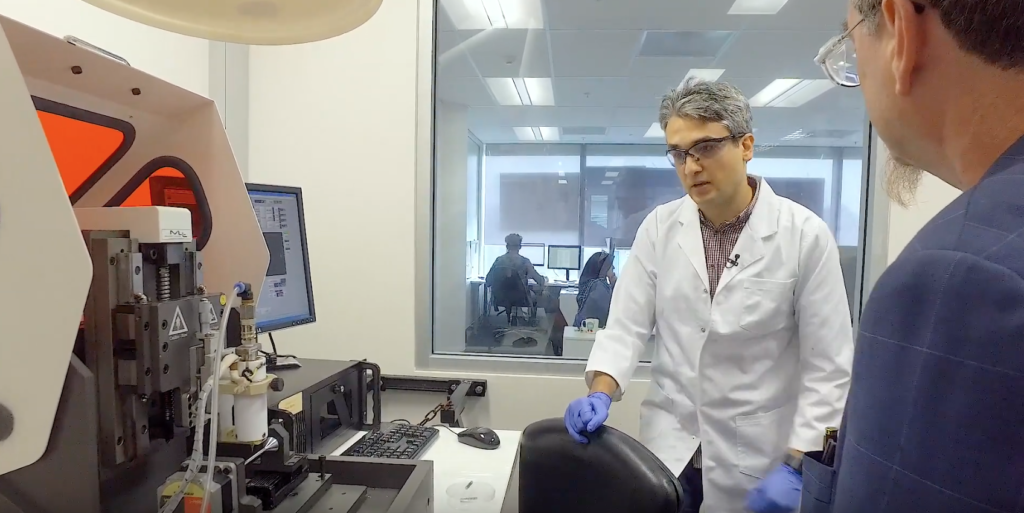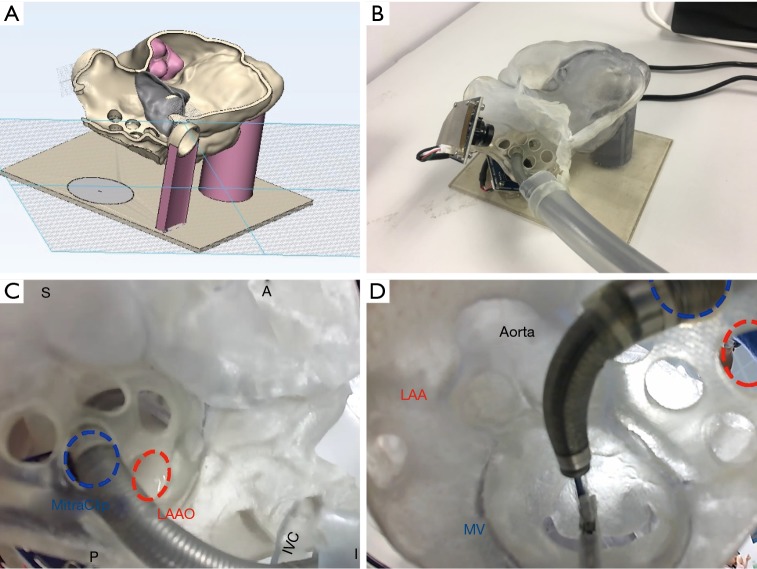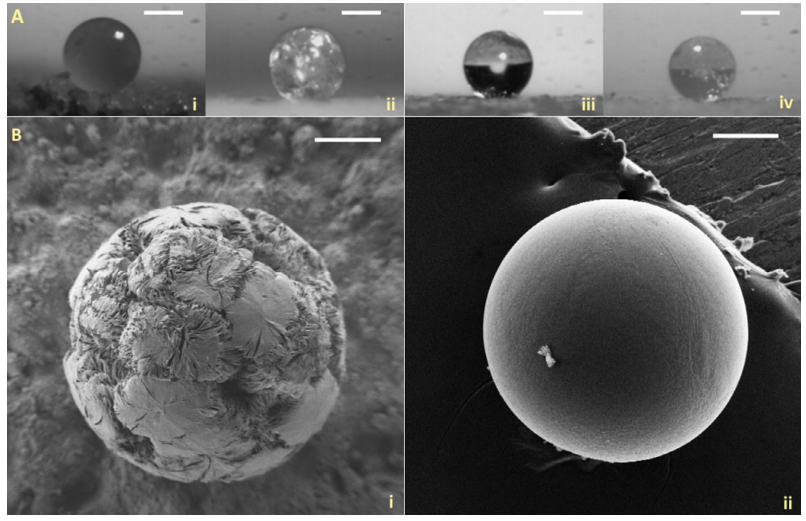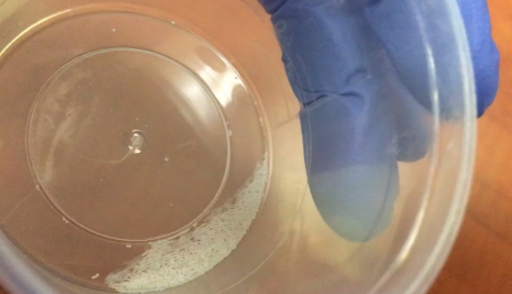 A leading scientist in the field of electromaterials and one of Australia’s visionary bioprinting enthusiasts Gordon Wallace took audiences through a virtual tour into the cutting edge research labs at the ARC Centre of Excellence for Electromaterials Science (ACES), where next-generation materials research and advanced engineering for the development of customized bioinks and bioprinters take place. Located within the heart of the Intelligent Polymer Research Institute (IPRI) at Australia’s University of Wollongong (UOW) Innovation Campus, ACES turns fundamental knowledge into the next generation of smart devices to improve people’s lives and deal with some of the great challenges of the century.
A leading scientist in the field of electromaterials and one of Australia’s visionary bioprinting enthusiasts Gordon Wallace took audiences through a virtual tour into the cutting edge research labs at the ARC Centre of Excellence for Electromaterials Science (ACES), where next-generation materials research and advanced engineering for the development of customized bioinks and bioprinters take place. Located within the heart of the Intelligent Polymer Research Institute (IPRI) at Australia’s University of Wollongong (UOW) Innovation Campus, ACES turns fundamental knowledge into the next generation of smart devices to improve people’s lives and deal with some of the great challenges of the century.
With his usual enthusiasm, Wallace engaged audiences as he presented fellow researchers at work and some of the new innovations, discoveries and development of new materials for use in the field of biofabrication. During the first part of the tour, he explores the development of Graphene, 3D printed stents, and cell preparation for bioprinting. For the second part of the tour (found in a separate article), Wallace walks into another building at UOW where the recently inaugurated Translational Research Initiative for Cell Engineering and Printing (TRICEP) is leading the initiative for 3D bioprinting encompassing bioink, bioprinter, and bioprinting process developments, including the manufacturing of medical devices and the integration of living cells delivered using customized bioprinters to address specific medical challenges.
“Here at ACES we are known for our fundamental work into the discovery and the development of new materials, that can be used in energy and medical bionics,” said Wallace. “We are using the most advanced methods of fabrication to develop protocols that will enable structures and devices to be created so that we can take those fundamental advances and use them in important areas.”
Starting with the basics, Wallace first explores a lab setting where Sanjeev Gambhir, a Senior Research Fellow at the Australian National Fabrication Facility (ANFF) of the University of Wollongong, develops graphene, a material he refers to as “wondrous”, with “amazing properties for the nanoworld that we have been able to extricate into the micro and macroscopic realms to realize applications.”
“To create a graphene-polymer composite synthesis, we modify the chemistries of graphene (which is derived from graphite, a naturally occurring mineral) so that we retain all the amazing mechanical, electric and biological properties and yet make it processible, that is, to turn it into structures and devices, using 3D printing, and eventually making it scalable,” said Gambhir.
Wallace added that “it is important that all the chemistries we use are actually scalable.” He claims that it is very different doing chemistry on a bench from processing graphene into tens of grams and managing to retain the same properties and quality as they were getting on the laboratory scale. It is all part of his vision to really make the process ready for industrial-scale manufacturing.
To show how graphene is turned into fibers for easier handling, Wallace takes audiences to the Fibre Spinning Electrodes area, where researcher Javad Foroughi, “weaves the magic” to create graphene fibers, that can even be combined with biomaterials to coat the surface of the fiber.
Working on customized 3D printed stents was Ali Jeirani, a Product Designer Development Specialist at UOW. It is one of the many processes where he uses 3D printing and takes advantage of all of the advances in material synthesis and processability at ACES, by turning them into real structures.
“One of the important parts about the properties of a stent for applications is the design. We use G-code to create different designs and then send them to our machine to print different structures and properties,” explained Jeirani. “One of the problems of commercial stents is that they cannot be personalized for the patient, so by using 3D printing, we can customize it according to the scan of the patient. We understand that there can be very complicated stent shapes that are readily realized with 3D printing.”
According to Wallace, the graphene is often blended with other materials to improve the properties of the part, and by using small amounts of graphene and blending it with a polymer, they can create the stent. The innovative material gives the stent extra mechanical properties and could even impart electrical properties into it, which the two experts consider “one of the most interesting properties of graphene for electro stimulation”.
“This is all made possible thanks to additive fabrication and advances in 3D printing, so it is an exciting time, since we can turn fundamental discoveries into really practical and useful structures almost immediately by working together, us at the 3D fabrication lab and our colleagues at materials processes,” continued Jeirani.
After delving into advancements in biomaterials and graphene, Wallace headed upstairs to the cell lab where Research Fellow at ACES, Eva Tomaskovic-Crook, revealed another important part of their work: the integration of living cells into printing protocols, which basically entails how scientists prepare the cells for printing.
They have several environments ready for the cells, from storing them in liquid nitrogen sample storage tanks–they have at least two Taylor Wharton LS750– to incubating them, which offer an environment where they nurture cells and provide the right growth conditions to expand. Incubators have a warm 37-degree environment ideal for maintaining cell growth.
“Quality control of our cells is very important. We need to be sure that the cells maintain the ability to be pluripotent (pluripotent stem cells have the ability to undergo self-renewal and to give rise to all cells of the tissues of the body). We want to scale up the number of cells and to encapsulate them in the biomaterial.” suggested Tomaskovic-Crook.
Scaling up the number of cells is crucial because when they go into the bioprinting process they want to create a three-dimensional tissue with a high cell to biomaterial mass, not just have a few cells. According to the specialist, “it involves a process of going back and forth: scaling up the cells at the lab, then printing them, and bringing them back to the lab to interrogate the cells and see if they are still living, proliferating and turning into the cells we want them to.”
Known for their expertise in advanced materials and device fabrication, ACES incorporates collaborators from across Australia and the world. ACES is generating options for the future, so being able to peek into some of the advanced materials and device fabrication for game-changing health and energy solutions is a privilege. Not only did Wallace explain some of the most breakthrough research in biomedicine, but he also showed viewers the machines that researchers work with on a daily basis. Wallace tends to emphasize that a big part of the Australian bioprinting community is about sharing research, insights, and knowledge to advance the field. The unique landscape of the country, with its cultural and linguistic diversity as well as residence to scientists from around the globe, makes it ideal for ideas and creativity to emerge.
You can tune in to see the first part of the virtual lab tour here.
The post An Inside Look into the ACES Lab (Part I) appeared first on 3DPrint.com | The Voice of 3D Printing / Additive Manufacturing.










 (triamcinolone acetonide),” state the authors.
(triamcinolone acetonide),” state the authors.



